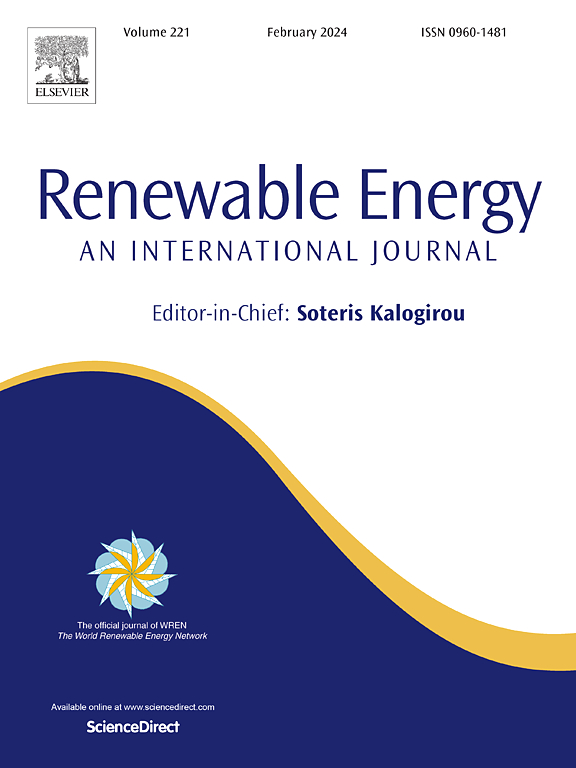Machine learning models and experimental evaluation on mass and temperature of dried coriander seeds in solar hybrid collector with dryer (SHCD)
IF 9.1
1区 工程技术
Q1 ENERGY & FUELS
引用次数: 0
Abstract
The aim of this study is to examine the drying processes of coriander seeds experimentally and by open sun drying. Using machine learning models, namely Gaussian Process Regression (GPR), Multilayer Perceptron (MLP), and Radial Bias Function (RBF), the experimental outcomes may be assessed. The quality of coriander seeds is greatly impacted by post-harvest drying, yet conventional open sun drying has drawbacks such as contamination and weather dependence. This study uses three machine learning models the Gaussian Process Regression (GPR), Multilayer Perceptron (MLP), and Radial Basis Function (RBF) to predict Heat induced dryness and Mass based dryness in order to experimentally compare sunlight drying (31–58 °C) to open sun drying for 3 kg of coriander seeds. Finding the best model to maximise drying conditions is the aim. The following drying parameters were tracked: air outlet temperature, moisture loss, and sun radiation. R2, RMSE, and MAPE were used to evaluate the model's performance. Important findings were RBF achieved R2 = 0.98 (temperature) and 0.99 (Mass based dryness), outperforming MLP and GPR. Higher mistakes were seen in MLP (R2 = 0.95) and GPR (R2 = 0.56 for mass), which were explained by the sensitivity of GPR to noise and MLP's reliance on the volume of training data. The results are based on 3 kg of drying on a small scale; confirmation on an industrial scale is required. Data on open sun drying, such as humidity and sunlight flux, vary by region. Data noise or inadequate hyperparameter tuning might be the cause of GPR's subpar performance. Results might not apply to seeds with various moisture profiles.
太阳能集热器-干燥器(SHCD)中香菜种子质量和温度的机器学习模型及实验评价
本研究的目的是考察芫荽种子的干燥过程实验和露天晒干。使用机器学习模型,即高斯过程回归(GPR),多层感知器(MLP)和径向偏倚函数(RBF),可以评估实验结果。收获后的干燥对香菜种子的质量影响很大,但传统的露天晒干存在污染和天气依赖性等缺点。本研究使用高斯过程回归(GPR)、多层感知器(MLP)和径向基函数(RBF)三种机器学习模型来预测热致干燥和质量致干燥,以便实验比较3公斤香菜种子的日光干燥(31-58°C)和露天干燥。找到最好的模型来最大化干燥条件是目标。跟踪了以下干燥参数:出风口温度、水分损失和太阳辐射。采用R2、RMSE和MAPE评价模型的性能。重要的发现是RBF达到R2 = 0.98(温度)和0.99(质量干燥),优于MLP和GPR。MLP (R2 = 0.95)和GPR(质量R2 = 0.56)的错误率较高,这可以解释为GPR对噪声的敏感性和MLP对训练数据量的依赖。结果是基于小规模的3公斤干燥;需要工业规模的确认。露天晒干的数据,如湿度和阳光通量,因地区而异。数据噪声或超参数调优不充分可能是导致探地雷达性能不理想的原因。结果可能不适用于具有不同湿度分布的种子。
本文章由计算机程序翻译,如有差异,请以英文原文为准。
求助全文
约1分钟内获得全文
求助全文
来源期刊

Renewable Energy
工程技术-能源与燃料
CiteScore
18.40
自引率
9.20%
发文量
1955
审稿时长
6.6 months
期刊介绍:
Renewable Energy journal is dedicated to advancing knowledge and disseminating insights on various topics and technologies within renewable energy systems and components. Our mission is to support researchers, engineers, economists, manufacturers, NGOs, associations, and societies in staying updated on new developments in their respective fields and applying alternative energy solutions to current practices.
As an international, multidisciplinary journal in renewable energy engineering and research, we strive to be a premier peer-reviewed platform and a trusted source of original research and reviews in the field of renewable energy. Join us in our endeavor to drive innovation and progress in sustainable energy solutions.
 求助内容:
求助内容: 应助结果提醒方式:
应助结果提醒方式:


